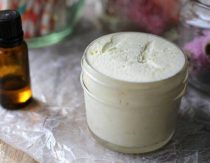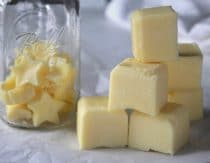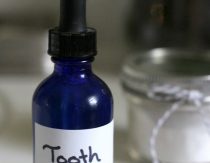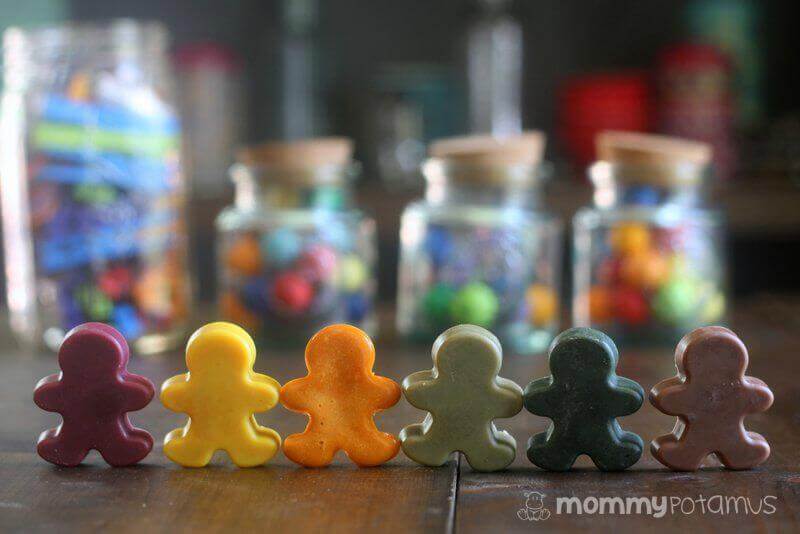
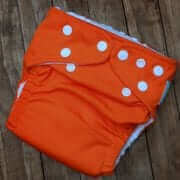
Chances are that if you love technicolor diapers as much as I do, it’s because the color is on the OUTSIDE where it should be.
Smeared on the inside because a toddler is tooting rainbows after an art project turned into a crayon tasting? I don’t think any parent loves that.
While it’s true that crayons are labeled as non-toxic, certain colors may contain up to 2-5 ppm of lead. (source) That’s below the amount allowed in toys, but above the 0.1 ppm amount the FDA has set for candies likely to be ingested by small children. (source) Obviously crayons are not candies, but some kids seem to think they are!
Now, as you may have noticed from these posts on completely edible finger paint, play dough, face paint and moon sand, I’m a big fan of making art/play supplies out of food grade ingredients. Though I did my best to keep my toddler from taste-testing our store-bought crayon stash, he did go through a period where he would try to sneak a few in. That inspired me to try to come up with a food grade recipe, which flopped . . .
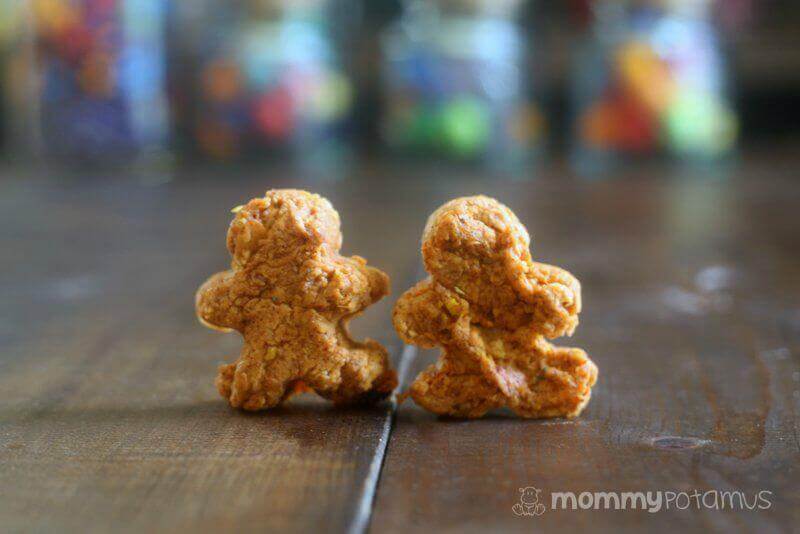
and FLOPPED . . .
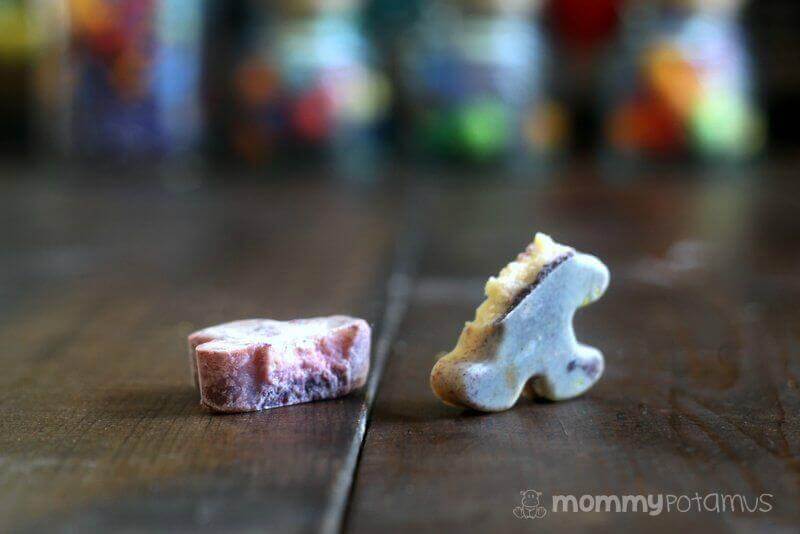
And flopped a few more times before it finally worked!
The secret, as it turns out . . .
Is a blend of beef tallow, fruit/veggie pigments and carnauba wax, which I learned about from Kresha at Nourishing Joy. It’s made from the leaves of a Brazilian palm tree, known as the “Tree of Life,” and it’s a food grade wax similar to beeswax. (source 1, source 2) The difference between the two is that it holds color a little better. Let me explain . . .
Beeswax Vs. Carnauba For Making Crayons
Crayons made with beeswax take longer to cool than carnauba-based crayons, which causes the pigment tends to settle more on one side than the other.
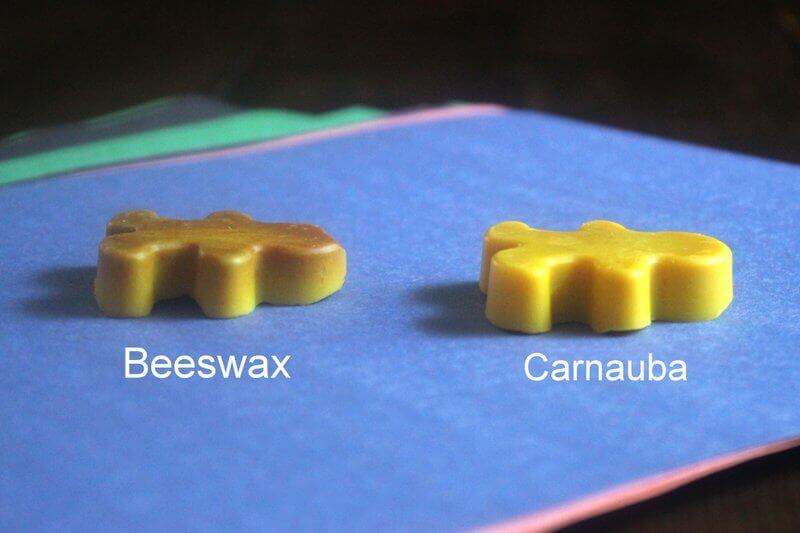
Also, after a few days beeswax crayons tend to form a white powdery layer on the outside. If you rub them in the color returns, though, so if you want to use beeswax instead of carnauba it will totally work.

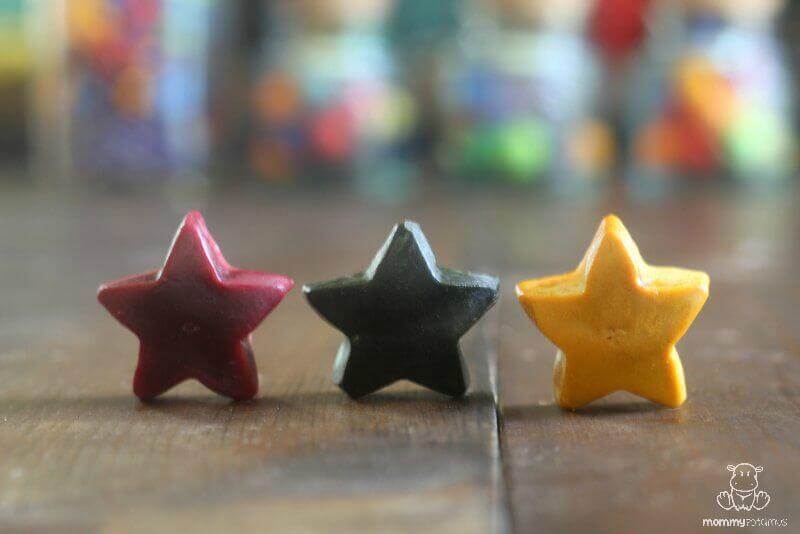
Either way, these crayons are perfect for little hands that are still developing fine motor skills! The yellow, orange, light green and brown are as smooth as store-bought crayons, while the pink and dark green are less smooth, but still totally usable.
What about a substitution for tallow?
If you don’t have tallow, you can use cacao butter. Not the stuff you find in the beauty section – only food grade, like this. It’s pricier than tallow, but will work in a pinch.
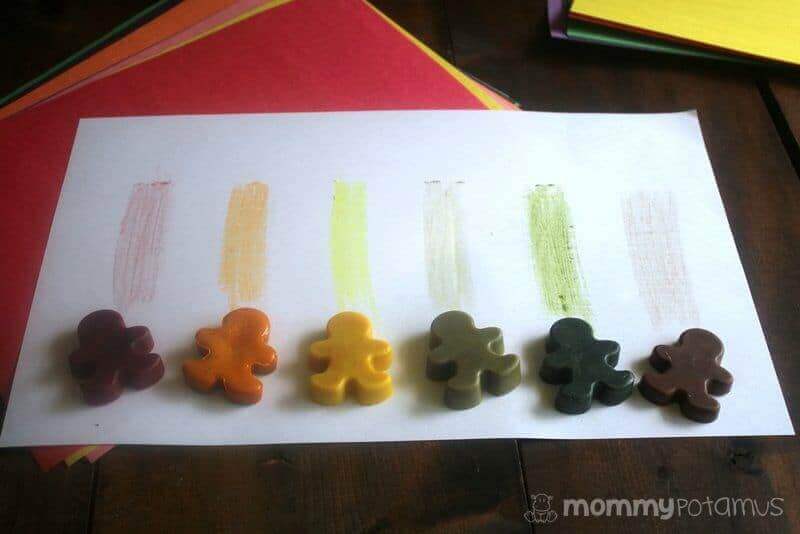
Now, I want to be clear . . .
That I supervise my little ones when they color, which is usually at the kitchen table while I am making lunch or dinner. Though the most popular crayon companies do sell crayons for toddlers (egg-shaped ones for children under two and sticks for children over two), they do so while recommending that parents keep an eye out for safety.
Pre-Made Crayon Recommendations
While researching materials to make crayons with, I came across a couple of alternatives to petroleum/paraffin wax-based crayons that I thought I would pass along.
Crayon Rocks are made from soy wax and mineral pigments. I called the founder and asked if their soy is non-gmo, and learned that she’d been trying to source non-gmo soy for quite awhile with no success. Apparently there are only a few processors in the U.S. that make wax from soy, and they refuse to separate gmo and non-gmo varieties during processing.
(FYI, according to the company the crayons are choking hazards for kids three and under.)
Honey Sticks makes 100% beeswax crayons that are tinted with mineral pigments.
Alrighty then, moving on!
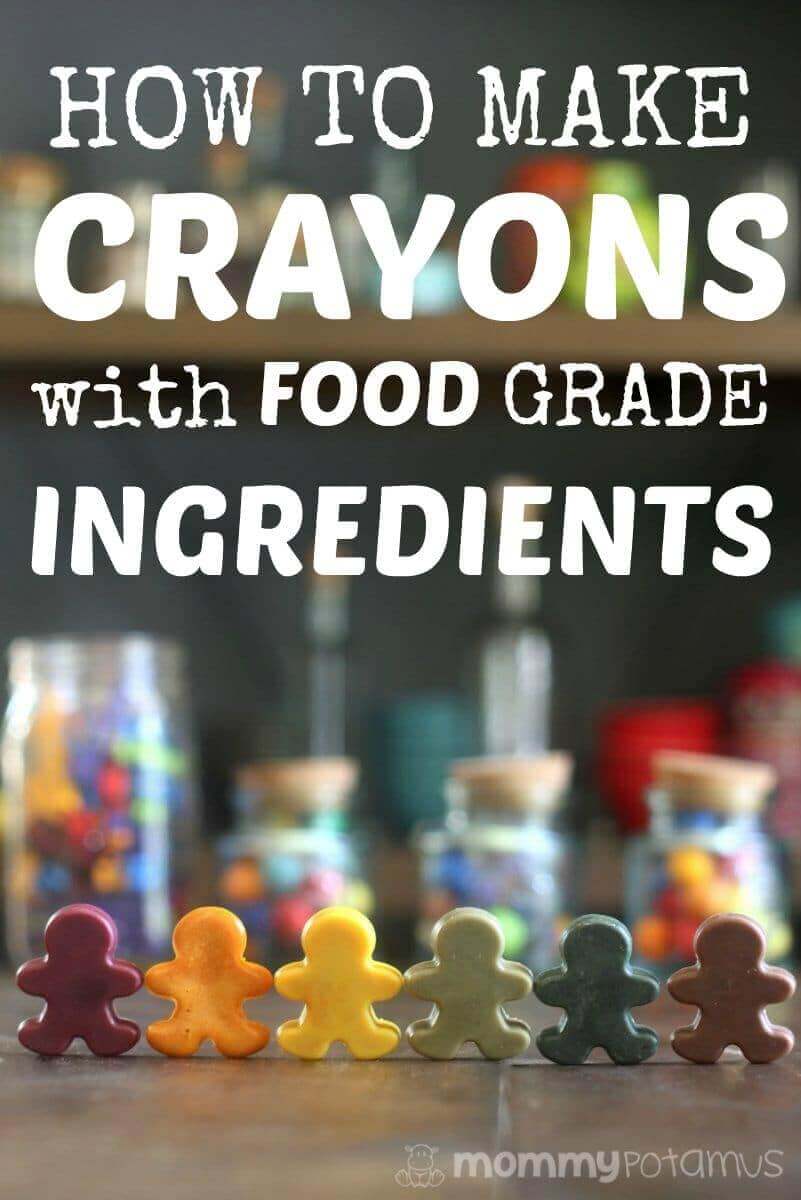
How To Make Crayons
One quick note: With the exception of the carnauba wax I pretty much used ingredients I had around the house to create these recipes. I’m hoping you’ll have at least a few on hand because it would be pricey to purchase them all just for this project. However, I have included resources for where to find things in case that would be helpful.
Each of these recipes makes 5 gingerbread boy crayons or 10 star shaped crayons.
Ingredients
All measurements are by weight.
Pretty Pink
- 1 ounce carnauba wax flakes (this is the most affordable source I could find)
- 1.5 ounces tallow (where to buy tallow, how to render your own)
- 5 teaspoons beetroot powder (find it here – you can use what’s left over to tint edible finger paint or make homemade cheek tint)
Sunshine Yellow
- 1 ounce carnauba wax (this is the most affordable source I could find)
- 1.5 ounces tallow (where to buy tallow, how to render your own)
- 1¼ teaspoons turmeric (find it here)
Creamsicle Orange
- 1 ounce carnauba wax (this is the most affordable source I could find)
- 1.5 ounces tallow (where to buy tallow, how to render your own)
- 1¼ teaspoons ground annatto (find it here)
Moss Green
- 1 ounce carnauba wax (this is the most affordable source I could find)
- 1.5 ounces tallow (where to buy tallow, how to render your own)
- 1/4 teaspoon ground sage and 1/4 teaspoon + 1/8 teaspoon chlorella
Forest Green
- 1 ounce carnauba wax (this is the most affordable source I could find)
- 1.5 ounces tallow (where to buy tallow, how to render your own)
- scant 1 ¼ teaspoons chlorella powder (we already had some on hand, but you can order it here and just take it out of the capsules, or find it at your local health food store)
Brown Earth
- 1 ounce carnauba wax (this is the most affordable source I could find)
- 1.5 ounces tallow (where to buy tallow, how to render your own)
- 2¼ teaspoons cacao or cocoa powder (find it here and use the leftovers to make homemade hot chocolate!)
Instructions
Gently melt carnauba and tallow in a double boiler. If you don’t have one (I don’t), place stainless steel bowl set inside a pot of boiling water. When both are completely melted, whisk in your pigment. Quickly pour the mixture into your crayon mold – allow to cool completely before removing.
A couple of things you need to know:
First, if as you pour the pretty pink crayon mixture in the mold you notice that there are some large beetroot particles in the bottom of the pan, don’t pour them in the mold. Each time I made pink/red there was a little sludge left in the pan that I didn’t add to the final crayon because it would make them gritty.
Second, annatto and other spices that make orange contain tiny compounds that settle onto one side and discolor it slightly. I have no idea why, but it happened with cayenne and paprika too!
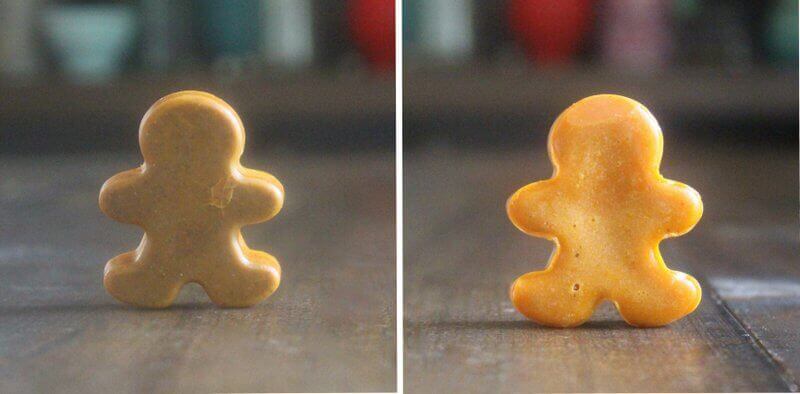
Cleaning Tip
After you’ve poured your crayons, place your pot back in the double boiler so that the thin layer of remaining wax heats up. When it’s hot, wipe it out with old newspaper or paper towels.

